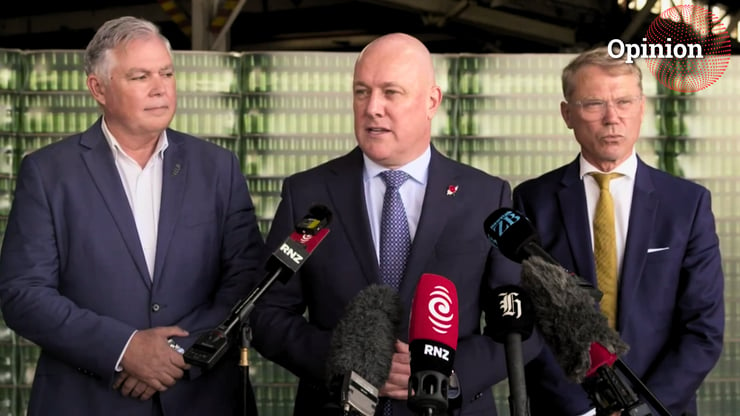Crime: Government Risks Credibility In Scramble To Claim Credit

The government is pushing the limits in what can only be described as a scramble to make a point on crime. It’s stretching thin the line between data and spin. That could damage its credibility despite having delivered several of its election commitments on crime reduction. It’s a question of messaging not intent.
The government had set a target of reducing the number of violent crime victims by 20,000 by the year 2029. This week, Justice Minister Paul Goldsmith and Police Minister Mark Mitchell announced they had surpassed that target. Goldsmith said he “expects the data to remain volatile”, seemingly hedging for small–potentially even big–changes in that statistic.
The Labour Party is already questioning the methodology used to arrive at that data. Some experts in the field are also not fully convinced. But that’s not even the biggest problem. The data the government is quoting pertains to a time period the Labour government was in power for the most part. Yes, the National-led coalition hadn’t even got its feet wet in government by then, nevermind getting any reasonable crack at tackling crime on the ground. Even that’s not the biggest problem.
The real question is – what’s the worth of a target that can be achieved even without having moved a finger? The government was in power only about two months when this target was met. Bear in mind, it set out to achieve this target four years from now. For a government that prides itself on setting measurable targets, and meeting them, this doesn’t bode well. At the centre of this week’s claims is the latest data from the New Zealand Crime and Victims Survey (NZCVS), which shows 34,000 fewer victims of violent crime in the year to February 2025 compared with the year to October 2024. That’s 28,000 fewer victims than the October 2023 baseline the government set for itself. On the face of it, this seems to confirm progress. But the numbers don’t tell the whole story—and certainly not the one the government is pushing.
The NZCVS traditionally releases its full reports annually, covering a two-year window: surveying people over a year, about their experience of crime in the year before that. These full reports are comprehensive, weighted for population changes, and supplemented with in-depth interviews.
In contrast, the quarterly updates the government now relies on are raw, less stable, and lack the full analytical rigour. These figures are typically not released to the public in full reports but are fed directly into the government's own reporting on its self-set targets. In other words, the numbers being cited this week haven’t been through the usual process of scrutiny and statistical polishing.
Even more telling is the time period the latest figures actually represent. The February 2025 data refers to people’s experience of crime between February 2023 and February 2024—when Labour was still in government for much of that stretch. Yet National is claiming credit for outcomes largely shaped under the previous administration. That doesn’t make the figures meaningless, but it does make the government’s rush to own them look opportunistic at best.
While the number of victims of non-family violence has fallen below the October 2023 baseline, the number of family violence victims is still higher. Yes, there was a 24 per cent drop in family violence victim numbers from October 2024 to February 2025—but compared with October 2023, there’s still a six per cent increase. These nuances didn’t make it into the press conference.
And regional trends complicate the story further. While Auckland and Canterbury saw reductions in victim numbers, Wellington and the Bay of Plenty recorded increases. Once again, the government has chosen the flattering national headline and avoided the uncomfortable local details.
Critics, including Labour’s police spokesperson Ginny Andersen, have questioned where exactly the decreases are coming from. She points out that the data “raises more questions than it provides answers.” And she’s not alone. Criminologist Dr Trevor Bradley has been quoted in the media as having warned that NZCVS data has known limitations, especially in areas like family and sexual violence where under-reporting is high. He called the announcement premature and suggested the government was trying to lock in a win before the full and more credible annual report is available.
There’s a bigger issue at play here: trust. When a government builds a narrative and then seeks out the data to support it—rather than letting the full weight of evidence shape its conclusions—it risks losing credibility. The National Party has made crime a centrepiece of its political brand. But crime statistics are notoriously complex, and success can’t be credibly measured by cherry-picked quarterly estimates that haven’t been fully vetted.
The public deserves honesty—not just about what's improving, but about what isn’t. That includes acknowledging the real limitations of early, partial data, and resisting the urge to turn every flicker of good news into a headline-grabbing claim. If the government’s policies are working, the data will eventually show that clearly and reliably. But rushing to declare victory, based on volatile and lightly processed statistics, invites suspicion that political gain is being prioritised over the truth.





